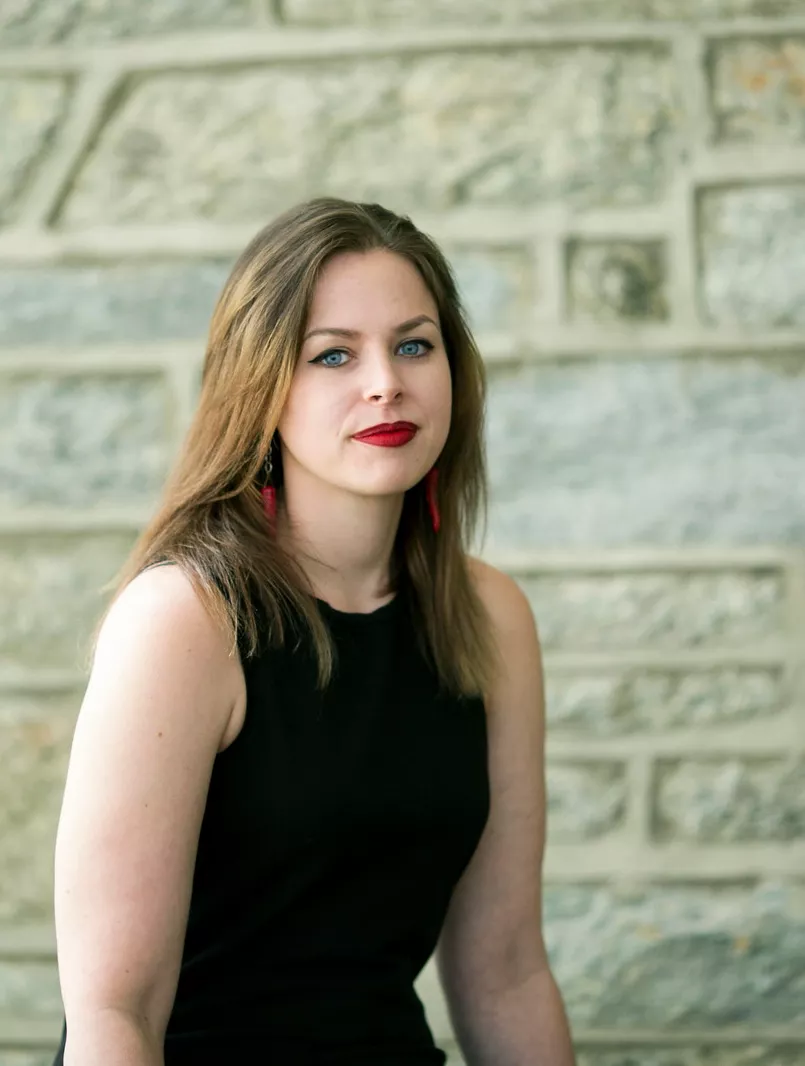From the Medieval to the Modern: Shannon Steiner M.A. ’13 explores Bryn Mawr’s Levine Collection

A doctoral candidate in the history of art, Shannon Steiner M.A. ’13 is a Medievalist, specializing in the Byzantine era. Her master’s theses—she holds two, one from the University of Texas and one from Bryn Mawr—focused, respectively, on Byzantine pilgrimage tokens from Syria and on the glass fragments affixed to burial sites in the Roman catacombs.
For her doctoral research, she is studying enamel from the middle Byzantine, “continuing,” she explains, “with the theme of materials and especially glass. I’m very interested in the medium as a marker of Byzantine identity. How as it circulated? And how was it used to promote Byzantine interests in the world?”
But this summer, Steiner had the opportunity to do some time-traveling—by 1,400 years—in Bryn Mawr’s Special Collections.
As one of the curatorial fellows funded by the Friends of the Library, Steiner spent her summer immersed in the world of European and American modernism.
The Jacqueline Koldin Levine ’46 and Howard Levine Collection, given to the College in 2012, comprises nearly 500 works on paper. With particular strengths in European modernism and American Social Realist movements like the Ashcan School, the collection shifted Steiner’s focus to more recent developments in the history of art.
Her task? To continue the research and accessing process that began two years ago when the collection arrived on campus. “I’ve been doing additional research—on top of what people completed last summer,” she explains.
Working stack by stack, print by print, Steiner compared accession records against public records—auction records and catalogues raisonnés (the comprehensive listing of an artist’s work)—to verify that the College has the right information, the right title, the right state and edition.
The Levines collected extensively from a variety of artists and time periods. Says Steiner,
“I’ve looked at everything from Eastman Johnson [a 19th-century American painter and one of the founders of the Metropolitan Museum of Art], to Salvador Dali portfolios, to local New Jersey artists. It’s like Christmas. Each stack is new and unusual and fun to work with.”
As she made her way through the collection, she researched artists, looked into the context in which the work was made, and began evaluating its place in the larger Bryn Mawr collection. “How does this piece fit in to our holdings? How is it different? What is the potential for the classroom? For exhibitions?”
And, as Steiner points out,
the potential of this “lovely and varied collection is considerable.”
To illustrate, she pulls out two prints: “Five Nudes,” a silkscreen print by the Belgian Surrealist Paul Delvaux and an etching by another Surrealist, the German artist Hans Bellmer.
Before the arrival of the Levine gift, Bryn Mawr held few examples of Surrealist art, Steiner explains, and these two artists help fill that gap. Delvaux, whose work typically features surreal human figures and industrial landscapes, is in the Peggy Guggenheim Collection in Venice, the Museum of Modern Art, the Metropolitan. “We were really excited to find this—it’s in beautiful color, it’s a really interesting subject, and the print itself is in excellent condition.”
The Bellmer, too, makes for an exciting addition to Bryn Mawr’s holdings. Better known as a sculptor and photographer, Bellmer executed several works on paper. “It offers an interesting perspective on the representation of the body at that particular moment of history,” Steiner says. “Plus, the print is in beautiful shape and beautifully executed.”
Her Byzantine interests aside, Steiner’s stint with the Levine collection represented something of a homecoming. “When Eric Pumroy [Seymour Adelman Director of Special Collections] told me about this opportunity, he asked if I knew anything about 19th- or 20th-century prints. And I do! I began my undergraduate studies in art school so I had made prints and understood the different processes.”
And, she adds, “My dissertation focuses on small objects scattered worldwide so I have been looking to work in collections—learning the logistics involved and also thinking about university collections for the purposes of pedagogy.”